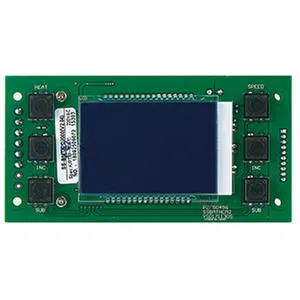When it comes to temperature control, there are various types of controllers available, each suitable for different applications. The best controller for temperature control depends on factors such as the specific temperature range, precision required, control algorithm, and the type of system being controlled. Here are a few commonly used controllers:

1. The Constant Temperature Stirring Controller is a constant temperature stirring controller for laboratory and industrial applications. It can precisely control the temperature of the reaction system and keep the temperature evenly distributed by stirring to improve the reaction efficiency and stability. The controller is usually equipped with a digital display and a touch control panel for easy operation. Users can achieve precise temperature and stirring control by setting the target temperature and stirring speed. Constant Temperature Stirring Controller is widely used in experiments and production processes in chemical, biological, pharmaceutical, food and other fields. It can meet different experimental needs and provide stable and reliable temperature control to ensure the accuracy and repeatability of experimental results.
2. Proportional Controllers: Proportional controllers modulate the output based on the difference between the actual temperature and the setpoint. They adjust the power or intensity of the heating or cooling device in proportion to the error. Proportional controllers provide more precise temperature control than on/off controllers but may still result in slight temperature oscillations.
3. PID Controllers: PID (Proportional-Integral-Derivative) controllers are widely used for temperature control in various industries. They combine proportional, integral, and derivative control actions to achieve accurate and stable temperature control. PID controllers continuously adjust the output based on the error, the integral of the error over time, and the rate of change of the error. They are highly versatile and can be fine-tuned for optimal performance.
4. Programmable Logic Controllers (PLCs): PLCs are widely used in industrial settings for temperature control and automation. They offer advanced control capabilities, including PID control, data logging, alarm management, and communication with other systems. PLCs are highly customizable and can be programmed to meet specific temperature control requirements.
5. Digital Temperature Controllers: Digital temperature controllers are microprocessor-based controllers that provide precise and stable temperature control. They often incorporate PID control algorithms and offer features such as programmable setpoints, ramp/soak profiles, and advanced user interfaces. Digital temperature controllers are commonly used in laboratory, research, and industrial applications.
When selecting a temperature controller, consider factors such as the required temperature range, accuracy, response time, control algorithm, and the specific application. It is also important to ensure that the controller is compatible with the heating or cooling devices being used. Consulting with experts or professionals in the field can help in choosing the best controller for your specific temperature control needs.